New energy power heart flat wire motor - Xiaomi will also put finger in
Before 2020, the replacement of flat wire motors to circular motors is still not obvious enough. Thanks to the advantages of the small size of the flat wire motor, the flat wire motor will be preferentially applied in large-scale hybrid vehicles, especially plug-in vehicles. However, due to policy and market factors in China, the proportion of plug-in models is relatively low. In the pure electric field, the penetration rate reached 50% of the market space last year. This year, it is expected that the flat wire will achieve 90% penetration in the annual sales of passenger car drive motors.
Recently, Xiaomi Auto Technology Co., Ltd. has published a number of invention patents, mainly in the fields of motor and electronic technology.
The abstract of the patent titled "Flat Wire Stator and Electric Motor" shows that the motor includes an iron core and a flat wire winding; the flat wire winding includes a first phase winding, and the first phase winding includes a plurality of coils wound around the axis of the iron core Rotationally symmetrical distribution, the coil is wound in part of the core slots in the multiple core slots, the first end and the second end of the coil are located at the same end of the core; multiple coils are connected in series, the first end of the coil and the The first end of one of the adjacent two coils is connected, and the second end of one coil is connected to the second end of the other of the two adjacent coils. Extending from the first end of the coil to the second end, a multi-layer winding is gradually formed, instead of forming one layer of windings and then connecting to another layer to form another layer of windings, there is no need to provide additional flat wire conductors from one layer. It can be bridged to another layer, thereby reducing the types of hairpin flat wires used in winding and improving production efficiency.
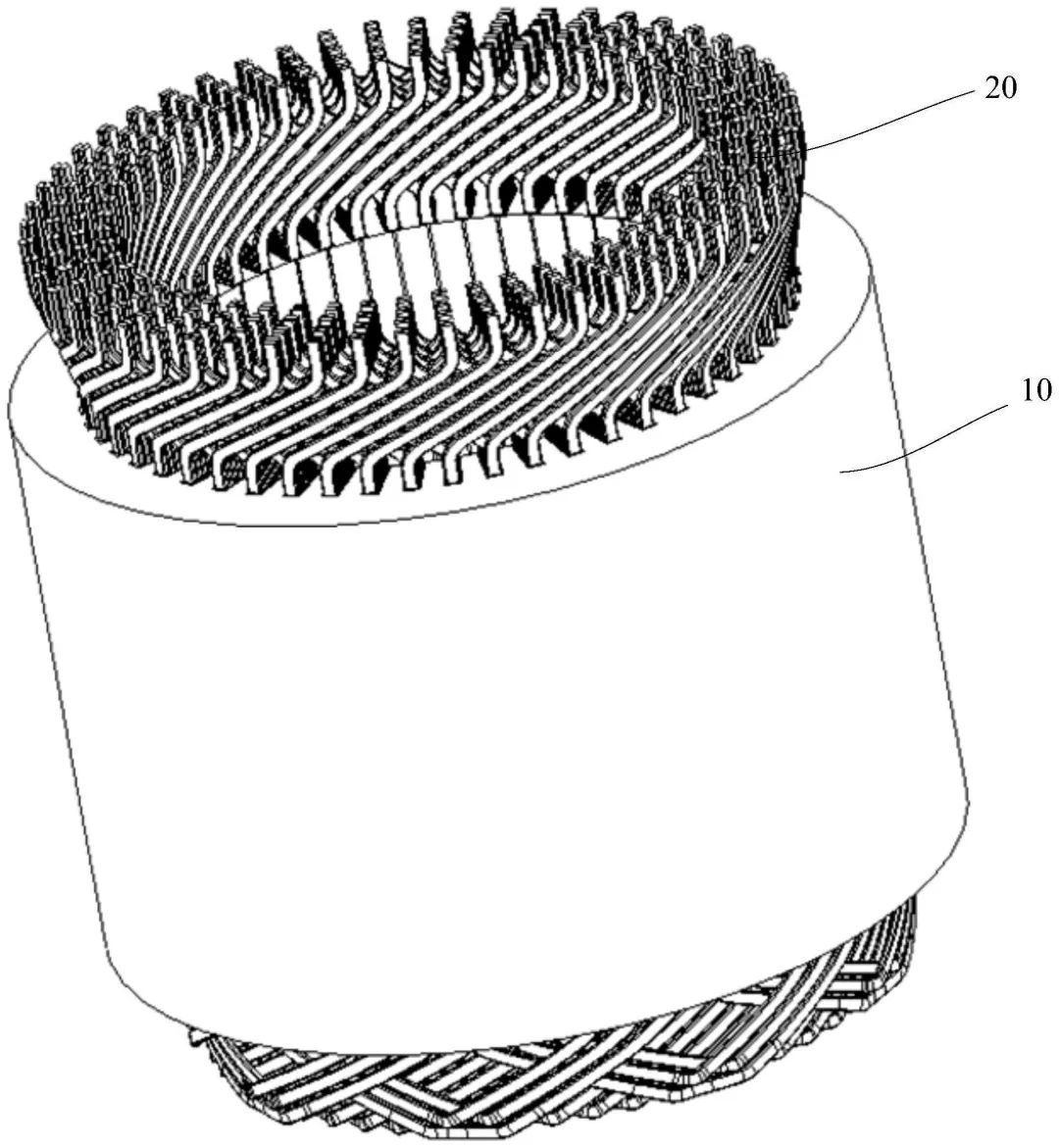
In order to ensure that the ends of the flat wire are neat and beautiful, the lead wires are relatively concentrated, which is more conducive to the arrangement of the busbar. It is usually in the form of wave winding. Due to the limitation of process capacity, the current domestic flat wire motor layers are mainly 4 layers, 6 layers and 8 layers. Take the 8-pole 48-slot 8-layer wave-wound flat wire motor as an example. The number of layers is numbered from the outer diameter to the inner diameter of ah. Crown and soldered ends of windings:
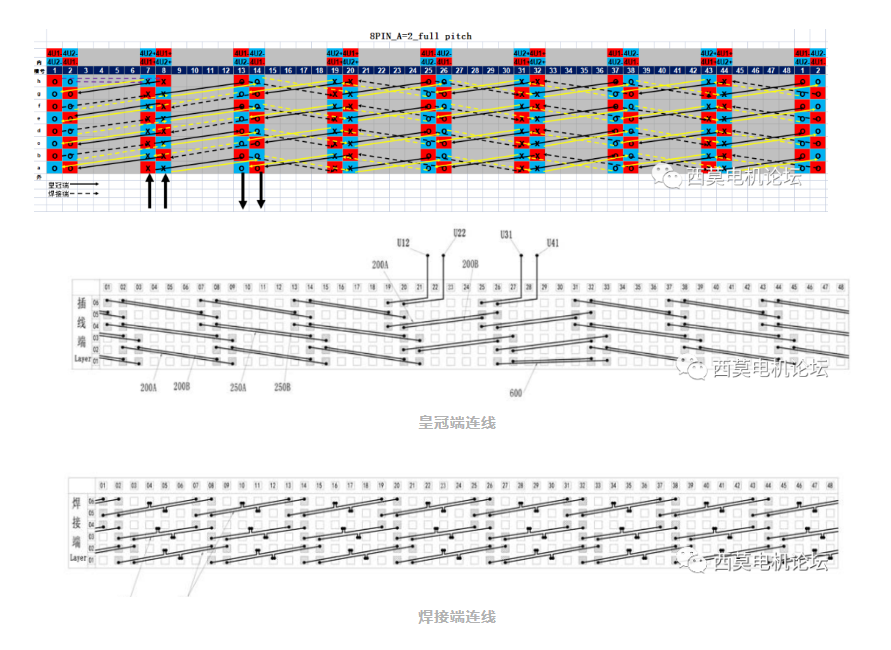
Source: Simo Motor Forum
Songzheng-CN202010958051 This patent introduces a mixed wave winding scheme of long-short-distance and long-full-distance or short-full-distance windings. It is characterized in that: the pitch between the two welded ends of the conductors of the Mth layer and the M+1th layer adjacent to the stator core in the radial direction is a short pitch or a long pitch, other The pitch between the two welded ends of the conductors of two adjacent layers is a full pitch.
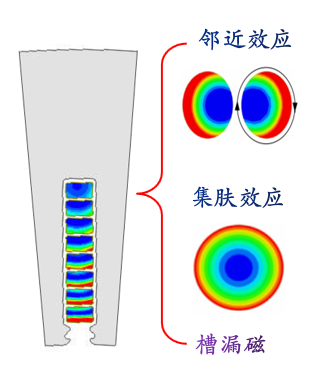
Source: Simo Motor Forum
The round wire motor can use thin wire, there are more wires, and the flat wire is thicker, which will produce a skin effect, which will increase the loss of the flat wire motor, but the impact is limited, which is manifested in the higher frequency of the AC copper of the flat wire winding. Consumption will be higher.
Skin effect: When there is alternating current or alternating electromagnetic field in the conductor, the current distribution inside the conductor is uneven, and the current is concentrated in the "skin" part of the conductor, that is to say, the current is concentrated in the thin layer on the outer surface of the conductor, and the closer it is to the surface of the conductor, The higher the current density, the less current is actually inside the conductor. As a result, the resistance of the conductor increases, and so does its power loss. In a DC system, when a DC current flows through a conductor, the current is evenly distributed over the entire conductor cross-section. In an AC system, when an AC current flows through a conductor, the AC current will be unevenly distributed on the cross section of the conductor and will be concentrated on the surface of the conductor, so this phenomenon is also called the skin effect.
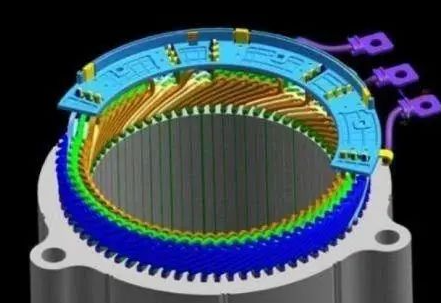
When the car runs at high speed, the frequency of the stator current is very high. Due to the large cross section of the flat copper wire , the skin effect will increase, which will increase the resistance of the winding and further increase the copper consumption.
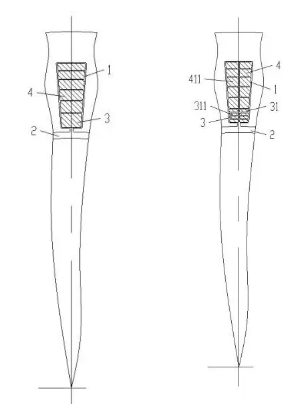
At this time, a reasonable electromagnetic design is very important, because the skin effect is also related to the electromagnetic design, such as the magnetic density amplitude in the slot, the height of the slot, etc., and key parameters such as the size of the flat copper wire will affect the skin effect and proximity. effect. Therefore, it is one of the most important tasks for electrical engineers to seek reasonable electromagnetics to avoid the increase in effective resistance caused by skin and proximity effects.
The purpose of this patent is to provide a flat wire motor winding slot structure with small iron core thickness and high motor power density.
The flat wire motor winding slot structure described in this patent has multiple conductors in the slot along the radial direction of the motor; the wire slot is a trapezoid with a narrow lower end close to the motor axis and a wide upper end away from the motor axis, away from the motor axis The width of the conductor is larger than the width of the conductor close to the motor axis; the opposite conductor side and the slot side are parallel; the cross-sectional area of each conductor is equal.
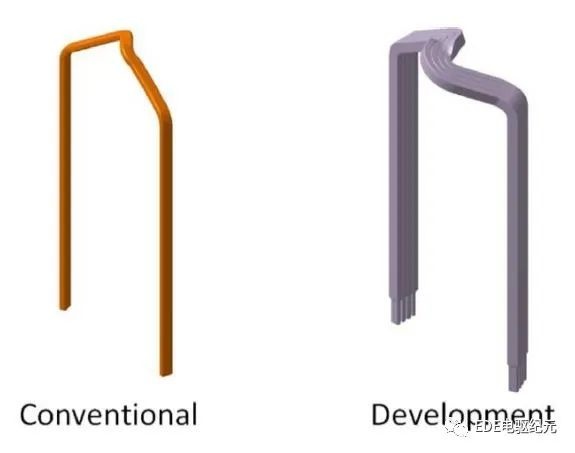
In this patent, the conventional rectangular wire slot on the iron core is designed as a trapezoidal wire slot, and the corresponding conductor cross-sectional shape is also similar to a trapezoid. The conductor of the axis has a large width but a small thickness, and the conductor far from the motor axis has a small width but a large thickness. In this way, the internal space of the motor can be maximized. On the premise of using the same copper, the length of the wire slot in the radial direction of the motor is shorter. Therefore, the thickness of the iron core in the radial direction of the motor is smaller, and the power density of the motor is higher than that of the rectangular slot motor. big.
At present, most of our common flat wire technologies use a single flat coil forming technology, and it is difficult to eliminate the gap at the winding end to achieve a more compact U-shaped flat wire and high power density. As shown in the figure below, the new stator used by Honda can realize the simultaneous molding of 4 U flat coils, which increases the proximity between the coils and makes the coil end density on the non-welded side higher.
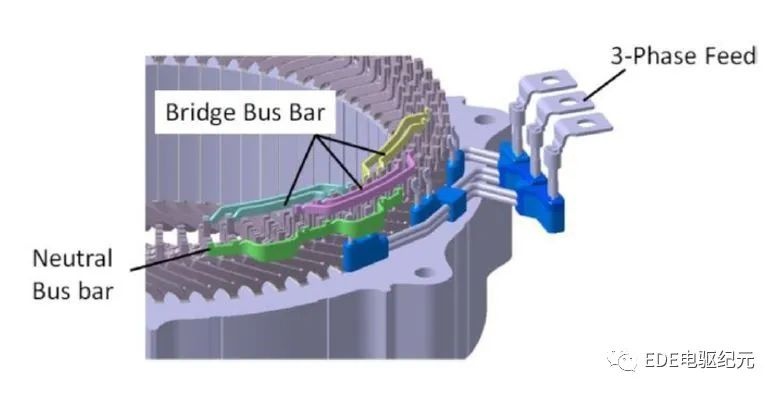
In addition, as shown in the figure below, at the welding end of the flat wire winding, the new stator adopts the wiring method of the bus bar, instead of the conventional method: "shape the flat coil into a special structure to realize the connection of the circuit". For the coil ends on the solder side, the Busbar structure described above is placed over the coil ends, and the coil end parts are twisted to form the same shape, increasing the proximity between the coils.
Summarize
Flat wire motors have advantages and disadvantages, the advantages are mainly reflected in the following points:
1. Effectively increase the conductive area in the motor slot, reduce the resistance of the motor winding, and greatly improve the slot utilization rate.
2. The winding adopts the forming process, the size of the end is compact, and the resistance of the ineffective part is reduced.
3. The forming winding has good rigidity and has great advantages in NVH.
4. There is surface contact between the winding and the winding and the winding and the slot, and the contact area is large, and the heat generated by the copper loss of the stator is easy to dissipate. From a comprehensive point of view of the motor, the flat wire motor improves the motor torque density, efficiency, optimizes NVH and has good heat dissipation performance.
Of course, there are pros and cons, but here are some disadvantages:
1. The winding processing technology is complex, the flat wire winding cannot damage the insulation, the welding and insulation process requirements of the end connection are high, and the design is difficult.
2. At present, the motor frequency of the new energy vehicle motor reaches more than 1000Hz at the maximum speed, and the efficiency advantage is lost due to the skin effect and the proximity effect in the high-speed section.
3. It is very important that the no-load back-EMF adjustment ability of the motor is weak. When the product matches different voltage platforms, the ability to adjust the no-load back-EMF is not as good as that of the loose-wire motor. The latitude that can be adjusted is mainly the length of the stator and rotor iron core, the grade of magnetic steel and the number of parallel branches.



























 XINDA
XINDA